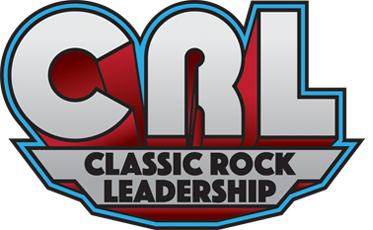Every CEO’s nightmare is watching profits turn from black to red. Your company was once at the top of the market, raking in the cash. Now it’s losing money, and you’re trying to get back on track. The struggle to stay in the black reminds me of AC/DC’s “Back In Black:”
‘Cause I’m back on the track and I’m beatin’ the flack
Nobody’s gonna get me on another rap
So look at me now, I’m just makin’ my play
Don’t try to push your luck, just get out of my way…
Yes I’m back
Well I’m back in black
— AC/DC, “Back In Black”
Unfortunately, the switch from red to black doesn’t happen overnight. It requires proper financial planning and a redefined business model.
Stay on top of your finances
One thing I found is that many CEOs are horrible with numbers. When they started their business, they were adept in the technical aspects, but lacked knowledge in the financial portion. It’s safe to say most entrepreneurs aren’t financial geniuses. As a result, CEOs get in trouble either by not watching their finances carefully, not hiring people to handle their finances, or not watching the people they DO hire.
On top of having a team of financial experts, CEOs need to make sure they have the right checks and balances. Don’t give the “keys to the kingdom” to any single individual. Even as a small company, I had a full time employee who did the bookkeeping, a CPA who came in once/month for a couple of hours to make sure everything was in order and who did some mid-level work like provide me a cash flow forecast that monitors my assets, and finally I had a larger accounting firm do my business taxes (and my personal taxes). Having these three involved made me feel comfortable that no “funny stuff” could go on. Definitely less chance of any embezzlement.
Adjust your business model
Taking inventory and cutting costs only goes so far to increase your profits. CEOs often forget to fine-tune their business model. Sure, you’ve built the perfect business model when you first started your company. But the environment, market, or economy might have changed since then – all that factors into your bottom line.
If you’re losing money or your sales are down, it could be that what you’re offering isn’t good enough anymore. Your first step is to look at your churn. If your customers are leaving you, you should stop and wonder why.
The case could be that disruptors are coming into your market, similar to the problem taxi cab companies now face with Uber or what some department stores are facing with Amazon. You might be used to the status quo, while other individuals are constructing innovative ideas to improve an existing industry, or creating products/services to disrupt the industry entirely. When that happens, you need to pivot. Adapt or die!
Plan ahead to avoid financial hardships
One of the biggest reasons why companies fail is because they don’t have the proper capital or financial backing. You should plan what you need to fund your business at the very beginning, whether it means establishing a line of credit, setting up your bank account, or borrowing from friends and family. And of course, the banks only lend you money when you don’t need it, so when you are in a good financial position and don’t NEED the money, get that line of credit bumped up or a loan for some ready cash. If you don’t have enough money or access to quick capital, you might have to pass up on a major contract. That’s a missed opportunity that could have helped you scale your business later down the road.
Stuck in the middle ground
In the book No Man’s Land, Doug Tatum discusses a point where companies are “too big to be small and too small to be big.” This issue appears frequently in the government-contracting world. Companies will grow, leave the small business arena, and go toe-to-toe with big companies like Lockheed Martin, CACI, and Northrop Grumman. You know as well as I do that they don’t have a prayer.
Companies get stuck in this middle ground area, which is horrible. They get to a certain point where they don’t have the proper processes and procedures to run operations like a well-oiled machine. If you don’t create systems, your company will lose traction and money.
There’s almost never just one reason companies lose profits. The correct financial planning coupled with the willingness to adapt, you don’t have to worry about getting “Back in Black”, because you’ll never be in the red.
“Back in black, I hit the sack
I been too long, I’m glad to be back.”
Brian’s Musical Inspiration:
RIFF: Back in Black was recorded over seven weeks in the Bahamas in spring 1980. The area was hit by tropical storms at the time, making the sessions difficult at times. Following its completion, the group mixed Back in Black at Electric Lady Studios in New York City. The album’s all-black cover was designed as a “sign of mourning” for Bon Scott, the band’s original lead vocalist.
BAND ON WIKI: https://en.wikipedia.org/wiki/AC/DC
WEBSITE: http://www.acdc.com


